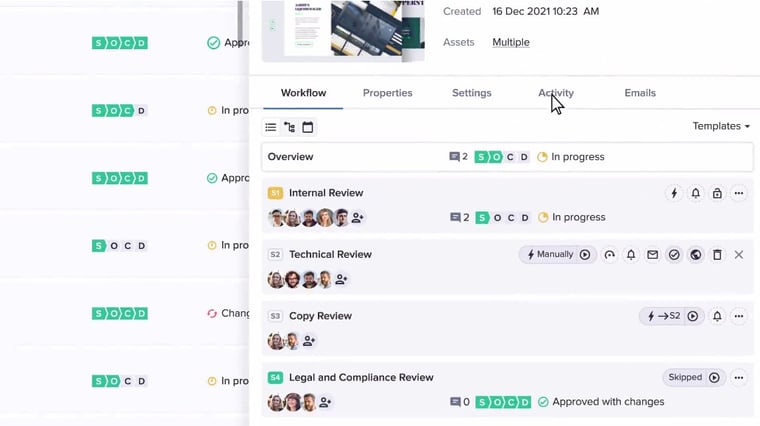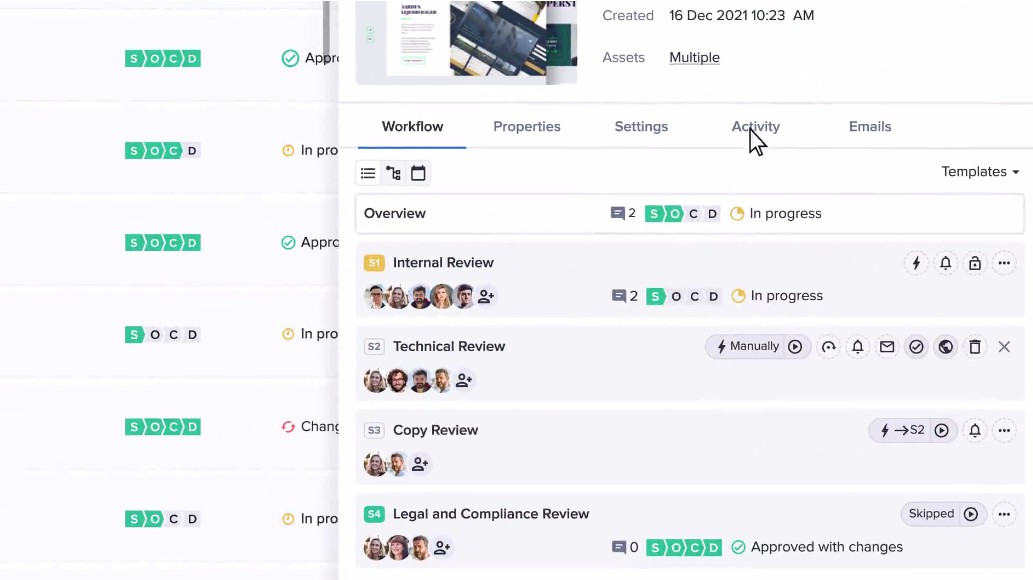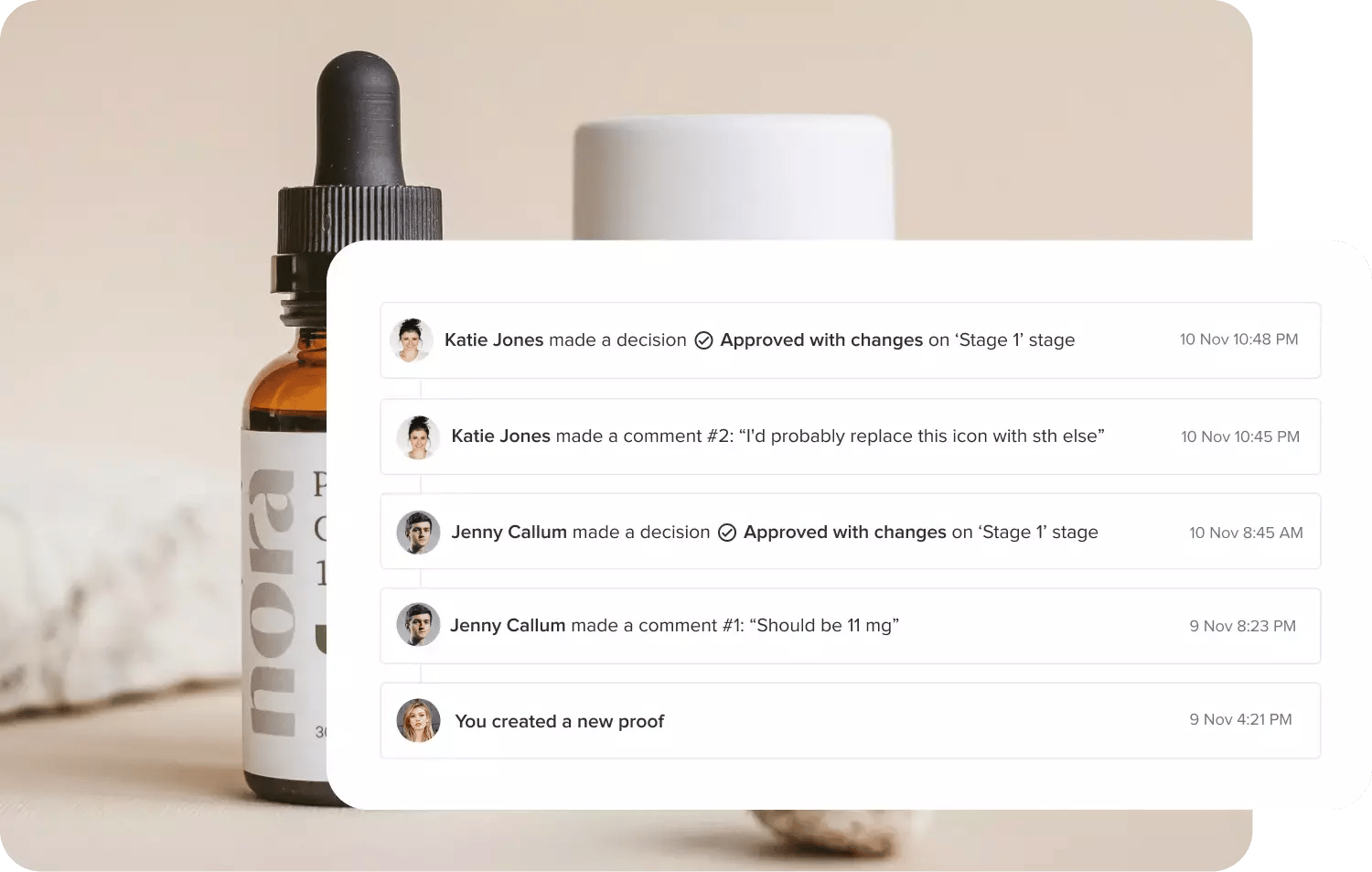In today's world, where brands and companies are creating an immense amount of digital content, it has become increasingly important–and difficult–to ensure that all the creative assets that a business produces meets brand and compliance standards.
Comprehensive compliance review involves close collaboration between several teams, including creative, marketing, sales, and legal stakeholders. If you’re working with client content, they may have their own legal review step to account for. That’s a lot of plates to keep spinning, especially when accuracy and transparency is so critical for brand compliance.
Coordinating the creative process with legal oversight is a balance for a busy creative team. Here’s how to efficiently bring your legal and compliance reviewers into your creative process and tighten up and standardize compliance oversight with your legal team.
What we'll cover
Table of contents
Identify the exact creative assets that require legal review
The first step in building a standardized legal review workflow is to identify the types and versions of creative assets that require legal review. This will help you figure out what and what doesn’t need to be incorporated into your legal review process.
For example, perhaps your compliance team must sign off any new or updated product packaging designs and review the content for product claims and brand consistency. Determine what part of the creation process requires review. Do they need to provide input on packaging copy before design begins? Or do they simply need to sign-off on a final version? Do they also need to approve any related content that may use that same copy and design, such as product ads on social media, printouts, and more?
Similarly, there may be assets that don’t require a formal review through your legal team. Determining the level and timing of review on each asset will help you craft a well-oiled workflow that doesn’t require extraneous steps or roadblocks.
Create a checklist of legal requirements
Once you have identified the types of creative assets that require legal review, the next step is to create a checklist of legal requirements that need to be reviewed for each asset. For example, the checklist for a video may include checking for copyrighted music or images, the checklist for a graphic design may include checking for brand guidelines for logos and design use, and copy may include accurate product claims. You may need to incorporate digital signatures for legal oversight.

It’s critical that your creative and legal teams agree on and are aware of these requirements before creative work begins. This ensures your creative team is working from the same legal framework when crafting brand guidelines from the beginning and that your legal team knows the context in which to provide feedback when creative assets come across their desk for review.
Automate conditional legal review steps
The most important consideration when crafting legal review workflow is enforcing that creative work does not progress without the right approvals.
The review system can be as simple as requiring all creative assets to be submitted to the legal review team before they are released or published. Alternatively, it can be more complex, with a system that flags any potential legal issues for review.
No matter what your workflow looks like, the first step is to create a single repository for creative review. Creating one space where your creative team can collaborate and communicate with your legal team on assets creates transparency in the legal review process.
You can then layer additional steps of staged approval onto this repository. With creative process automation, you can build workflows that automatically notify your legal team when new assets are ready for review, enforce review deadlines, and notify your creative team when the compliance team has added comments, feedback or approval directly on creative proofs. These kinds of notifications can help assets get approved faster and create ultimate transparency in who needs to make changes/comments.

The ability to add different approval steps and groups and different reviewers to each stage provides invaluable compliance management. You’ll ensure your legal team is only seeing content exactly when it’s ready for review, and protect your creative process from “too many cooks in the kitchen” syndrome.
Document and archive full creative histories
It may seem meta, but monitoring and documenting the legal review process is the most important step to shoring up compliance activities.
Once a project is complete, putting approved and launched assets into a secure folder repository is a great first step. However, simply storing files within a compliant folder structure isn’t enough. Creative teams should ideally be archiving the full history of the entire creative workstream for posterity.
Creative teams should capture not only assets and proofs, but also:
- A history of the steps of the approval process
- A list of applied decisions checklists and digital signatures for each creative asset
- Version history that demonstrates how creative work was modified over time
- An archive of finished proofs
- The complete list of comments and feedback on an asset on every version
Having a complete snapshot of how work was created and approved provides your team and business with an assured method for future evaluation and reflection if issues arise. You can see not only what creative assets were approved–but why, when, and by whom.

This kind of archive can be difficult to achieve and maintain accurately, so we recommend that creative teams automate this as much as possible with compliance software.
Building a legal review workflow for creative assets is critical for any business that produces a high volume of content for review. By following the steps outlined above, your creative team can ensure that all creative assets are legally compliant, which can help avoid legal issues down the road. A robust legal review workflow can also provide peace of mind to the business and its stakeholders, knowing that they are operating within legal limits.
Want to learn more? Read our full guide to compliance for creative team: The Ultimate Guide to Marketing Compliance




